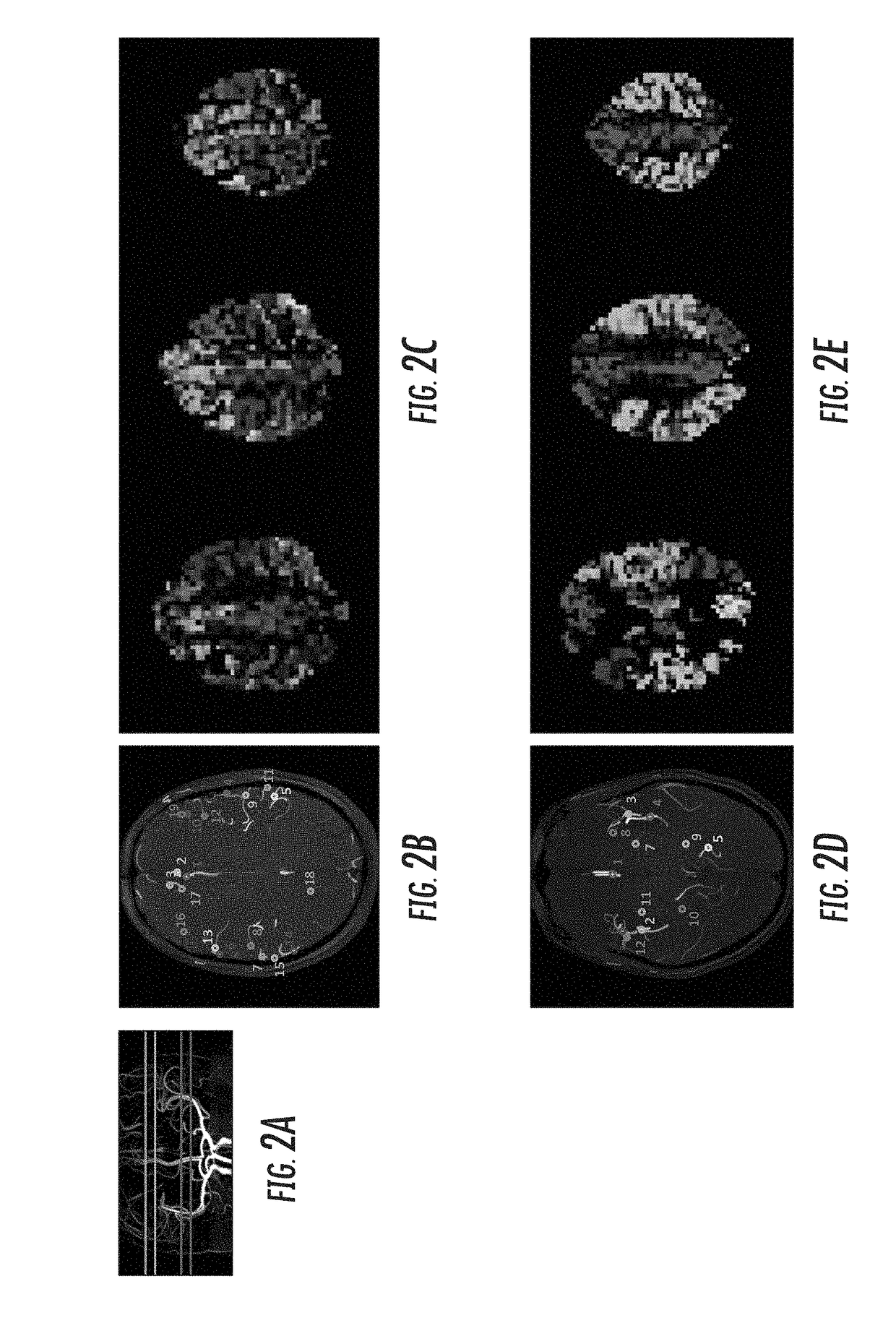Vascular territory segmentation using mutual clustering information from image space and label space
a technology of applied in the field of vascular territory segmentation using mutual clustering information from image space and label space, can solve the problems of increasing the risk of ischemic stroke, reducing the blood supply to the subservient parts of the brain, and quantitative mapping of blood flow from individual source arteries is still not practical in clinical settings
- Summary
- Abstract
- Description
- Claims
- Application Information
AI Technical Summary
Benefits of technology
Problems solved by technology
Method used
Image
Examples
examples
Probabilistic Cerebral Vascular Territory Atlases
[0088]Physiologically accurate mapping of cerebral blood flow in multiple separate vascular territories has a wide range of potential research and clinical applications, including the investigation and diagnosis of numerous common disease conditions that affect cerebral perfusion, such as migraine, carotid stenosis, and extracranialintracranial bypass before and after surgery. The identification of functional changes in vascular distributions, as well as quantitative measures of blood flow per voxel may be useful for individualized surgical planning, such as predicting the risk of potential iatrogenic ischemic stroke. Moreover, anatomical variations of the cerebral arteries and knowledge of this variation can avoid misdiagnosis. Probabilistic vascular territory atlases are well suited to take this vascular variation into account. Therefore, access to detailed vascular territory atlases may serve to advance understanding of the pathoph...
PUM
 Login to View More
Login to View More Abstract
Description
Claims
Application Information
 Login to View More
Login to View More - R&D
- Intellectual Property
- Life Sciences
- Materials
- Tech Scout
- Unparalleled Data Quality
- Higher Quality Content
- 60% Fewer Hallucinations
Browse by: Latest US Patents, China's latest patents, Technical Efficacy Thesaurus, Application Domain, Technology Topic, Popular Technical Reports.
© 2025 PatSnap. All rights reserved.Legal|Privacy policy|Modern Slavery Act Transparency Statement|Sitemap|About US| Contact US: help@patsnap.com



